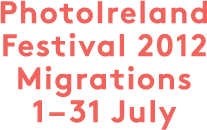Photographer Łukasz Baksik (born in 1975) is primarily interested in documentary photography. All of his previous projects (e.g. Main Course Polish Style, Ordering a Beer, or The People of Nowy Square) contained a crucial social component. For many years Łukasz Baksik has been documenting Jewish cemeteries in Poland.
Embellished with symbols and inscriptions, Jewish tombstones convey information about the life of people, families and entire shtetls (towns). How many matzevot were there before the World War II at the 1,200 Jewish cemeteries in Poland? This is a question, which nobody can answer today. The number may have reached a few hundred thousand or a few million.
More than four hundred Jewish cemeteries did not survive the war times. They were rearranged to provide sites for housing estates, sports fields, garbage dumps or sand quarries. The sand mined from them to build houses was mixed with human remains. Only a hundred and fifty graveyards still have more than a hundred gravestones.
During the World War II the Nazi occupants used matzevot to pave the courtyards of their new buildings, to lay roads or erect walls. Poles continued this infamous practice after the war. Matzevot were used, for instance, to line a water pool for fire fighters, a railway embankment or a riverbank. They were used as building material for furnaces, flooring and road curbs. A visitor will find hundreds of grinding wheels made of matzevot, many of them still bearing Hebrew inscriptions.
The excibition “Matzevot for Everyday Use” forms part of 22 Jewish Culture Festival which takes place in Krakow – Poland from 29 of June until 8 of July 2012.








